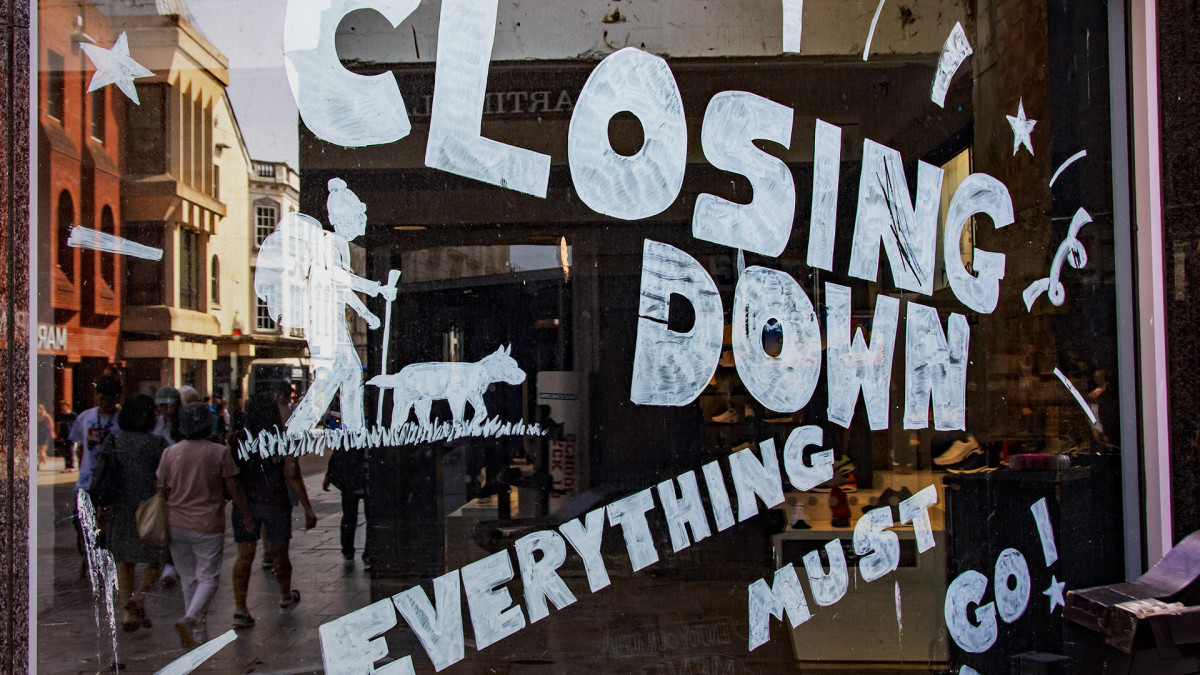
During the covid pandemic, a lot of people needed new furniture. Maybe they wanted to add a home office or they simply decided to make the place they were spending most of their time in a lot more comfortable.
In addition to people who made changes at their houses, a lot of other Americans moved. And, since most residential dwellings aren't sold furnished, that created a lot of demand for the industry and propped up some companies that have since crashed back down to earth.
Related: Popular retail sports brands bankrupt, headed for liquidation
The most obvious example of a covid-impacted furniture retailer is Wayfair (W) -), the online furniture seller that does not have stores. That worked for the company during a period when everyone was worried about catching a potentially fatal virus.
People were more willing to risk a lumpy couch or bed they didn't like if it was in stock and ready for delivery. Since people weren't going (for the most part) to traditional brick-and-mortar furniture stores, online retailers actually had an advantage since they had the needed digital infrastructure in place.
Once covid became less of a risk after vaccines were introduced, all furniture stores faced another big problem. Yes, people were willing to come back to stores to shop, but a lot of demand had been pulled forward. Some digital-only and many traditional furniture stores had huge sales in 2021 but those numbers slipped a lot in 2022 and 2023 because furniture often lasts for decades.
That has led to Mitchell Gold + Bob Williams being liquidated, Z Gallerie going through that process right now, and Wayfair (W) -) showing up on various potential bankruptcy lists due to its massive debt. (Wayfair shares are off 42% since an August high.)

Image source: Shutterstock.
Another local furniture icon files Chapter 11 bankruptcy
Ruby-Gordon Home, which has operated in upstate New York for nearly 100 years, has filed for Chapter 11 bankruptcy protection. The company, which operates two showrooms, blames the covid pandemic for its financial woes.
“We’ve been struggling to recover since 2020. Unfortunately, in the last eight months, too much went sideways in too short an amount of time. Klaussner going out the way they did was the straw that broke our back,” owner and CEO Aaron Ruby told Furniture Today . “We’re hoping that Chapter 11 gives us a chance at having a future, we’re just not certain exactly what that will look like.”
Klaussner is a furniture maker that closed abruptly in August. That left its customers with unfilled orders that, in some cases, they had paid for.
Ruby-Gordon has been a fixture in and around Rochester, N.Y.
"With a history dating back to 1936, we are committed to bringing the best designs and best customer service to our customers. We are a third generation, family-owned furniture store with a passion for making your space a home," the company shared on its website.
In the Chapter 11 bankruptcy filing, Ruby-Gordon listed an estimated $1,000,001 to $10 million in total assets with $1,000,001 to $10 million in total liabilities to an estimated 100 to 199 creditors.
Another furniture retailer could follow
The climate for selling furniture is not expected to improve quickly. That's because unlike electronics, which have a 2-4 year replacement cycle, most furniture has a longer cycle.
That means that the demand that pulled forward during the pandemic won't come back after a bad year or two. It could take much longer. That puts already struggling companies like Wayfair at significant risk of bankruptcy.
Wayfair, "with its once-promising pandemic-era business surge, now finds itself in treacherous waters," said Rapid Ratings Executive Chairman James Gellert in an email to TheStreet."In an era of abundant and inexpensive capital, Wayfair was able to stay afloat because they had time on their side. However, the clock is ticking. Higher interest rates and a risk-on market environment are causing a capital retraction."
The online furniture retailer scored a 19 on Rapid Ratings' Financial Health Rating scale. That's a pretty bleak number which puts the company in the bottom half of Rapid Ratings' high-risk group "with an estimated probability of default of 11.41% over the next 12 months," according to the report.
Wayfair lost $401 million in its most-recent six months, down from $697 million in the same period the year before. The company currently has roughly $3.4 billion in assets and $6 billion in liabilities.







